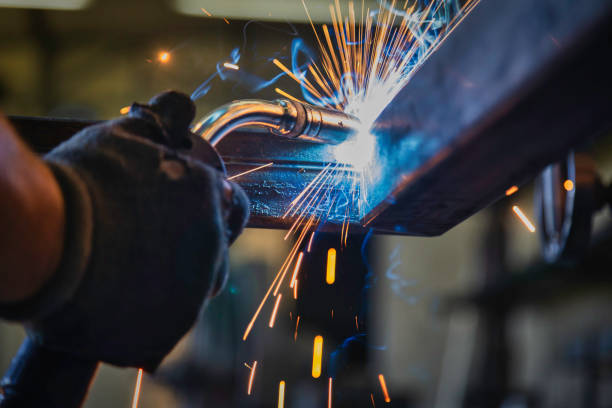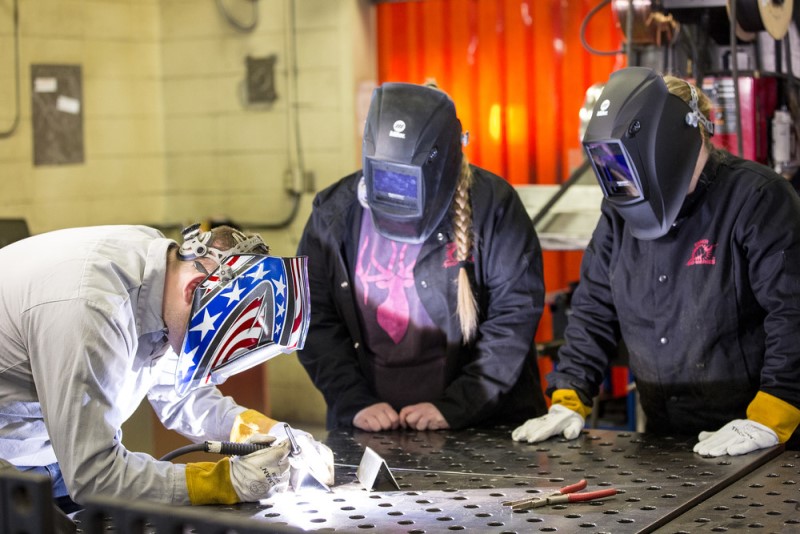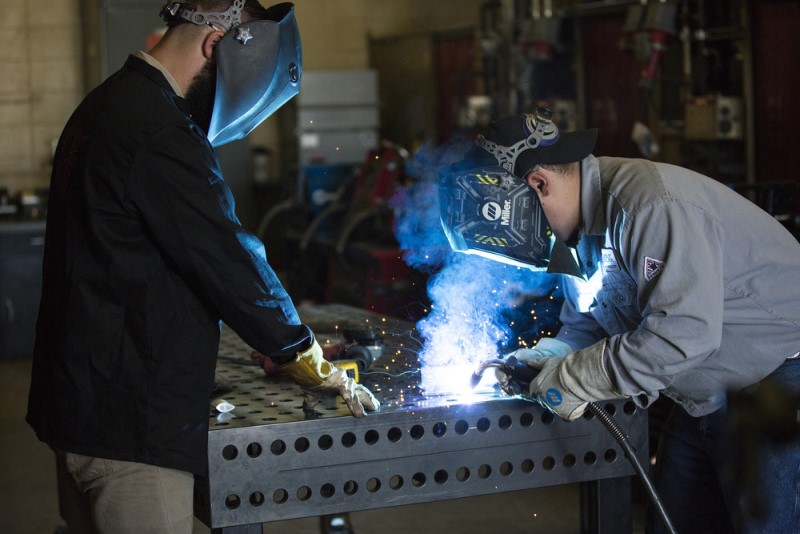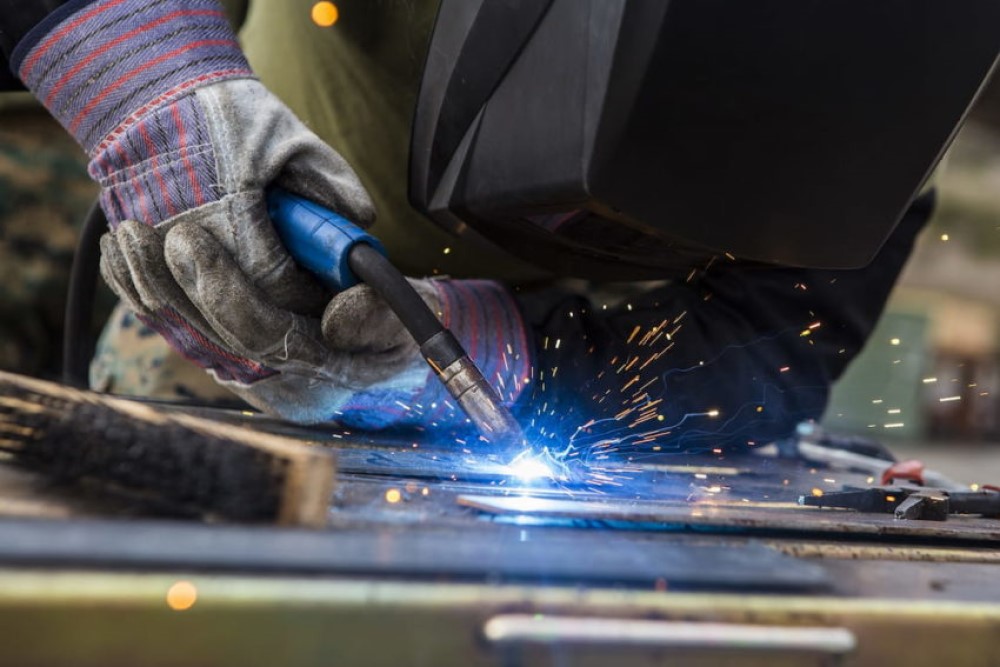What if you could get better at MIG welding in just 10 minutes a day? Wouldn’t that be something amazing? Well, that’s exactly what you can do with some practice and patience. In this blog post, we‘ll show you how to get better at MIG welding!
What does MIG welding require of a welder?
As you know, any job requires participants to understand and have full knowledge of the field of expertise. There are many types of welding today that are widely used in industry and mechanical engineering, MIG welding is very beginner-friendly. Even so, you also need to understand the requirements that this type of welding makes:
- Physical dexterity: MIG welding requires a good level of hand-eye coordination and manual dexterity in order to hold the welding torch and control the movement of the metal as it is being welded.
- Attention to detail: MIG welding requires a high degree of precision and attention to detail in order to ensure a high-quality weld. The welder must be able to make accurate passes and control the speed and depth of the weld to avoid defects.
- Knowledge of welding techniques: MIG welding requires a good understanding of welding techniques and an ability to adjust the welding parameters to suit different materials and welding positions.
- Familiarity with welding equipment: MIG welding requires a good understanding of the welding equipment and how to properly set up and use it, including selecting the right welding wire, adjusting the gas flow and current, and selecting the appropriate shielding gas.
- Safety awareness: MIG welding involves the use of high-temperature flames and dangerous gases, so a welder must be aware of the safety hazards involved and take appropriate precautions to protect themselves and others.
- Good eye protection: Welders must wear the proper eye protection to protect themselves from harmful UV and infrared radiation.
- Good protective clothing: Welders must wear protective clothing, including gloves and a welding jacket, to protect their skin from sparks and hot metal.

How to get better at MIG welding
1. Practice regularly
Practice is one of the most important things you can do to improve your MIG welding skills. Begin with simple welding projects and gradually increase the complexity as you improve. You’ll gain abilities and confidence as a result of doing this.
Pay close attention to your technique as you practice. Make sure you are using the right welding speed and travel angle, controlling the weld pool, and maintaining the proper arc length.
Practice welding on different materials, such as steel, aluminum, and stainless steel, to develop a better understanding of how different materials behave when welded. Experiment with different MIG welding techniques, such as weaving and pulsing, and see how they affect the weld quality.
Record your progress and any challenges you encounter in a welding journal. This will help you identify areas where you need to improve and track your progress over time.
2. Watch welding demonstrations and tutorials
There are many websites and platforms that offer welding demonstrations and tutorials. You can find a wealth of welding tutorials and demonstrations on YouTube. Simply search for “welding tutorials” or “welding demonstrations” and you’ll find many videos from experts and enthusiasts.
Websites like Udemy and Coursera offer online welding courses that include video tutorials, demonstrations, and hands-on exercises. These courses can be a great way to learn welding in a structured and comprehensive manner.
Many welding equipment manufacturers have tutorials and demonstrations on their websites. For example, Lincoln Electric has a library of welding tutorials and videos on their website.
There are many online communities dedicated to welding, where you can find discussions, tutorials, and demonstrations. Websites like WeldingWeb and Practical Machinist are great places to start.

3. Experiment with different welding parameters
The welding current determines the heat generated by the welding process and can have a significant impact on the weld quality. Try adjusting the welding current to see how it affects the depth of penetration, bead shape, and overall weld quality.
The welding voltage affects the arc length and stability, and can have an impact on the overall weld quality. Experiment with different welding voltages to see how they affect the weld bead appearance and penetration.
The wire feed speed determines the amount of filler material being added to the weld and can impact the weld quality. Experiment with different wire feed speeds to see how they affect the weld bead shape, penetration, and overall quality.
The gas flow helps protect the weld from oxidation and contamination. Experiment with different gas flow rates to see how they affect the weld quality, particularly the shielding and cleanup of the weld bead.
4. Get professional training
Getting professional training can be extremely helpful for improving your MIG welding skills. Many professional welding training programs offer certification, which can demonstrate your competency and experience in MIG welding to potential employers or customers.
Professional training provides a structured education in MIG welding, including the theory and principles behind the process, welding techniques, and welding safety. Moreover, it provides hands-on experience under the guidance of experienced welders, allowing you to put into practice what you learn in the classroom.
Professional training programs often have access to advanced welding equipment and technology, allowing you to gain experience using state-of-the-art tools and techniques. They provide opportunities to network with other welders and industry professionals, giving you access to a wealth of knowledge and experience.


